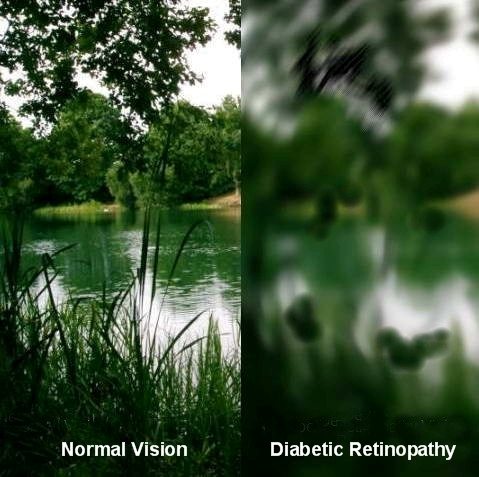
Understanding Diabetic Retinopathy
Diabetic retinopathy is a condition that affects the blood vessels in the retina, the light-sensitive tissue at the back of the eye. It occurs in people with diabetes and can lead to vision problems and even retinal detachment if left untreated.
How Does Diabetes Affect the Eyes?
High blood sugar levels can damage the small blood vessels in the retina, causing them to leak fluid or bleed. Over time, this can result in swelling, scar tissue, and new, fragile blood vessels that may cause further damage.
Stages of Diabetic Retinopathy:
- Early (Non-Proliferative) Stage: Small blood vessels in the retina become damaged, leading to leakage of fluid or blood. Vision may not yet be affected.
- Moderate to Severe Stage: Blood vessels become more blocked, causing more serious damage to the retina.
- Proliferative Diabetic Retinopathy: New, abnormal blood vessels grow in the retina and can cause severe bleeding, leading to vision loss or even detachment of the retina.
Healthy Eye
Advanced Diabetic Retinopathy
Diabetic Tractional Retinal Detachment
Symptoms to Watch for:
- Blurred or fluctuating vision
- Dark spots or strings (“floaters”)
- Impaired color vision
- Difficulty seeing at night
- Sudden loss of vision (in severe cases)

Prevention and Management:
- Control Blood Sugar: Maintain healthy blood glucose levels.
- Monitor Blood Pressure and Cholesterol: Keep these within target ranges.
- Regular Eye Exams: Get a comprehensive dilated eye exam at least once a year.
- Quit Smoking: Smoking increases the risk of vision complications.
- Follow Treatment Plans: If diagnosed, treatments may include medications, laser therapy, or surgery to prevent further damage
Who is at Risk?
Anyone with diabetes (Type 1, Type 2, or gestational diabetes) is at risk, but the chances increase with:
- Poor blood sugar control
- Long duration of diabetes
- High blood pressure or cholesterol
- Smoking


